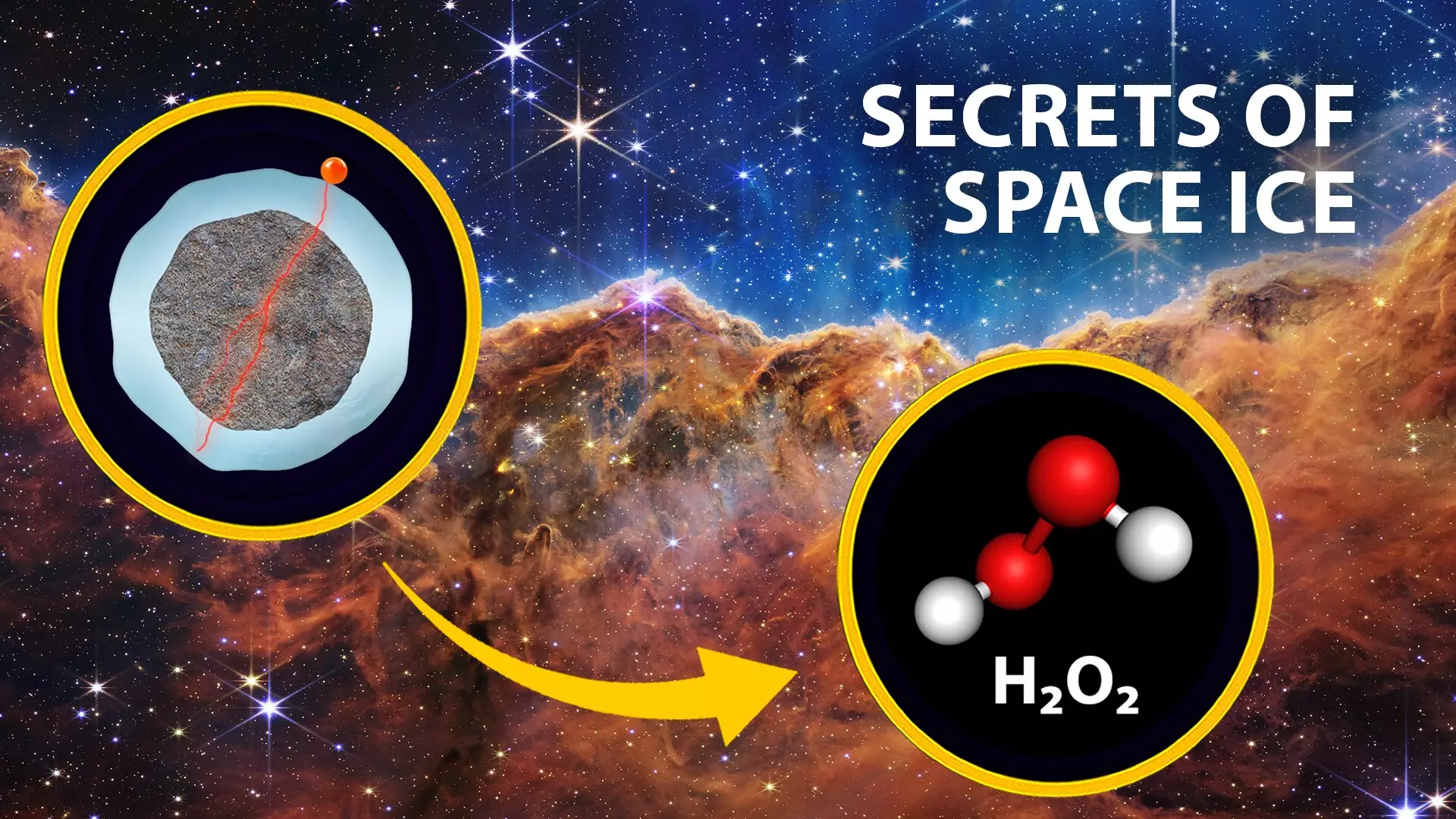The age-old questions of “Who are we?” and “Why are we here?” have always intrigued humanity. Drawing inspiration from the iconic Crosby, Stills, Nash & Young song, “We are stardust,” we turn our gaze towards the stars, seeking understanding of our cosmic origins. The essence of human life is deeply rooted in the intricate dance of chemistry taking place across vast expanses of interstellar gas and dust. Recent research spearheaded by a team of undergraduates at Wellesley College has taken significant strides in examining how low-energy electrons—produced as cosmic radiation interacts with ice particles—can contribute to the formation of prebiotic molecules. These molecules are not just the building blocks of life on Earth; they may also exist in other realms of the universe.
Kennedy Barnes, an undergraduate researcher at Wellesley, is set to present enlightening findings at the forthcoming American Chemical Society’s fall meeting. This hybrid event, which is scheduled from August 18 to 22, 2024, is poised to showcase around 10,000 scientific presentations, reflecting an eclectic array of scientific discoveries. The research led by Barnes and her colleague Rong Wu, under the mentorship of esteemed professors, focuses on understanding how extraterrestrial molecules form and what drives their synthesis—a question that has fascinated scientists since the pioneering work of Annie Jump Cannon over a century ago.
The team’s innovative inquiry centers on the comparative influence of low-energy electrons and photons on the chemical reactions responsible for synthesizing prebiotic molecules in space. Prior studies suggested that both types of radiation could initiate similar reactions. However, the emerging data from Barnes and her team indicate a possible divergence in the efficiency and output of these two forces when interacting with cosmic ice. “Our calculations suggest that the concentration of cosmic-ray-induced electrons is significantly higher than that of photons,” Barnes explains, emphasizing that electrons may have a more crucial role in the synthesis of prebiotic molecules than previously understood.
While much of the focus is on the celestial sphere, the implications of this research extend far beyond the stratosphere to terrestrial applications. Barnes’s team has turned their scrutiny toward the radiolysis of water, a process wherein high-energy radiation breaks down water molecules, leading to the formation of potentially hazardous byproducts such as hydrogen peroxide and hydroperoxyl radicals. These byproducts are known to have destructive impacts on stratospheric ozone and can also inflict damage within biological organisms.
A significant finding from their radiolysis investigation is the potential medical application of low-energy electron behavior. The notion that humans, largely composed of water, are profoundly impacted by low-energy electrons opens new avenues for exploring their effects on DNA and the development of cancer treatments. “As one of my professors once said, we are essentially bags of water,” Barnes quips, underscoring the relevance of water radiolysis findings in medical contexts.
Furthermore, these findings bear significance for environmental efforts aimed at treating wastewater with high-energy radiation, which instigates the production of low-energy electrons. This method holds promise for detoxifying hazardous chemicals, demonstrating a harmonious link between cosmic research and environmental remediation.
To intricately study these phenomena, Barnes and her team have been meticulous in constructing laboratory simulations that recreate extraterrestrial conditions. Using an ultrahigh-vacuum chamber outfitted with a cooled copper substrate, along with advanced methodologies like electron guns and plasma lamps, researchers probe the interactions between electrons and nanoscale ice films. By simulating space-like environments within the lab, they can methodically observe the molecule generation processes.
Their research doesn’t stop at merely observing the initial interactions. They are actively experimenting with different molecular compositions and exploring atom addition reactions to determine how low-energy electrons might yield even more complex prebiotic chemistries. This collaborative effort also connects them with international researchers at the Laboratory for the Study of Radiation and Matter in Astrophysics and Atmospheres in France, amplifying the impact and reach of their work.
As these promising inquiries advance, Barnes expresses her optimism for the future of astrochemistry. “We are on the cusp of discovering a wealth of knowledge,” she states, her enthusiasm palpable. This resurgence of interest in cosmic chemistry reflects a broader quest for answers about our own existence and the intricate processes that may generate life throughout the cosmos.
Understanding the role of low-energy electrons in the formation of life’s building blocks accelerates our grasp of the universe and may even guide us in our ongoing exploration of celestial bodies. With missions like NASA’s James Webb Space Telescope and the upcoming Europa Clipper mission poised to probe environments reminiscent of those studied in the lab, the frontier of knowledge promises to expand, inspiring future generations of researchers to delve deeper into the mysteries of life, both here on Earth and in the vast expanse beyond.


Leave a Reply